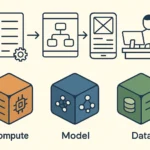Many enterprises have launched AI pilots — chatbots, automation tasks, predictive models — with optimism. Yet time and again, the outcome falls short of business expectations. The gap isn’t the AI model; it’s the platform posture. When organizations treat AI as a standalone tool rather than a coordinated platform, results are limited. According to a U.S.-centric study by McKinsey & Company, while employees are ready for AI, the biggest barrier is leadership and the readiness of systems. deloitte.wsj.com
Recent research snapshot
- A survey of 3,613 U.S. workers and 238 C‑level executives found that 81% of responses came from the U.S., that employees were already using AI more than leaders expected, but only when embedded in workflows did it deliver value. deloitte.wsj.com
- Data indicates that generative AI use at work increases productivity: in one case, workers were ~33% more productive per hour when using generative AI tools. Deloitte United Kingdom
- The broader picture: only ~7–9% of U.S. firms have deeply integrated AI into core business operations — meaning most are still experimenting.
Implications for enterprise leaders
The data tells a clear story: launching pilots is not enough. To capture value, you must:
-
Build AI workflows that connect with business processes, not stand alone.
-
Set up governance, data pipelines, monitoring, and measurement so the AI platform is sustainable.
-
Shift leadership mindset: AI should be an enterprise platform, not just a tool or department.
Neglecting these means the typical “productivity gain” from AI remains surface‑level and non‑cumulative.
Takeaways
-
Define the AI platform blueprint – Start by articulating how AI fits into business value streams (sales, operations, customer experience) and how data flows through.
-
Deliver in modular, product‑driven increments – Instead of one big rollout, treat each use‑case as a product with a backlog, metrics, a cross‑functional team, and a deployment plan.
-
Enable governance & reuse – Create reusable pipelines, shared models, and standards (e.g., versioning, monitoring) so each new use case builds on the last.
-
Measure the right things – Productivity, time‑to‑value, cost reduction, error reduction — but only when AI is integrated in workflow and measured end‑to‑end.
At M10 Labs, we specialize in guiding enterprises through this leap: from isolated pilots to scalable, governed AI platforms aligned to business outcomes. If your organization is asking, “How do we scale AI beyond the lab?”, we’re ready to help.









